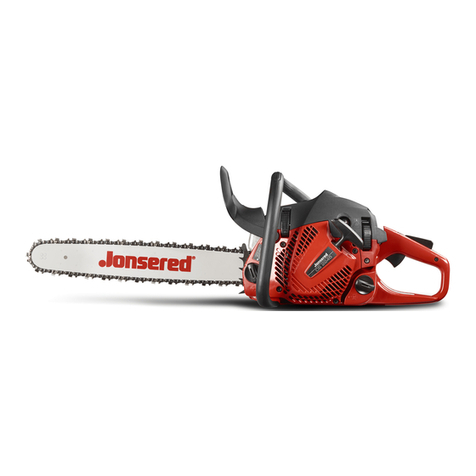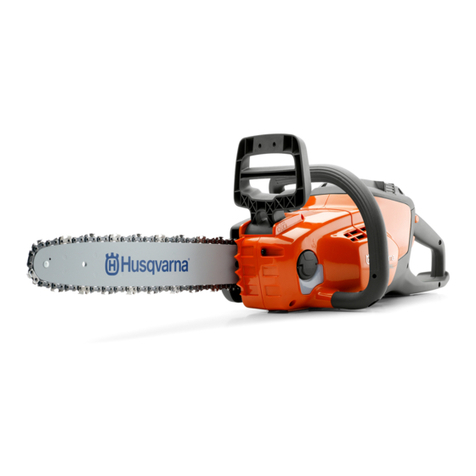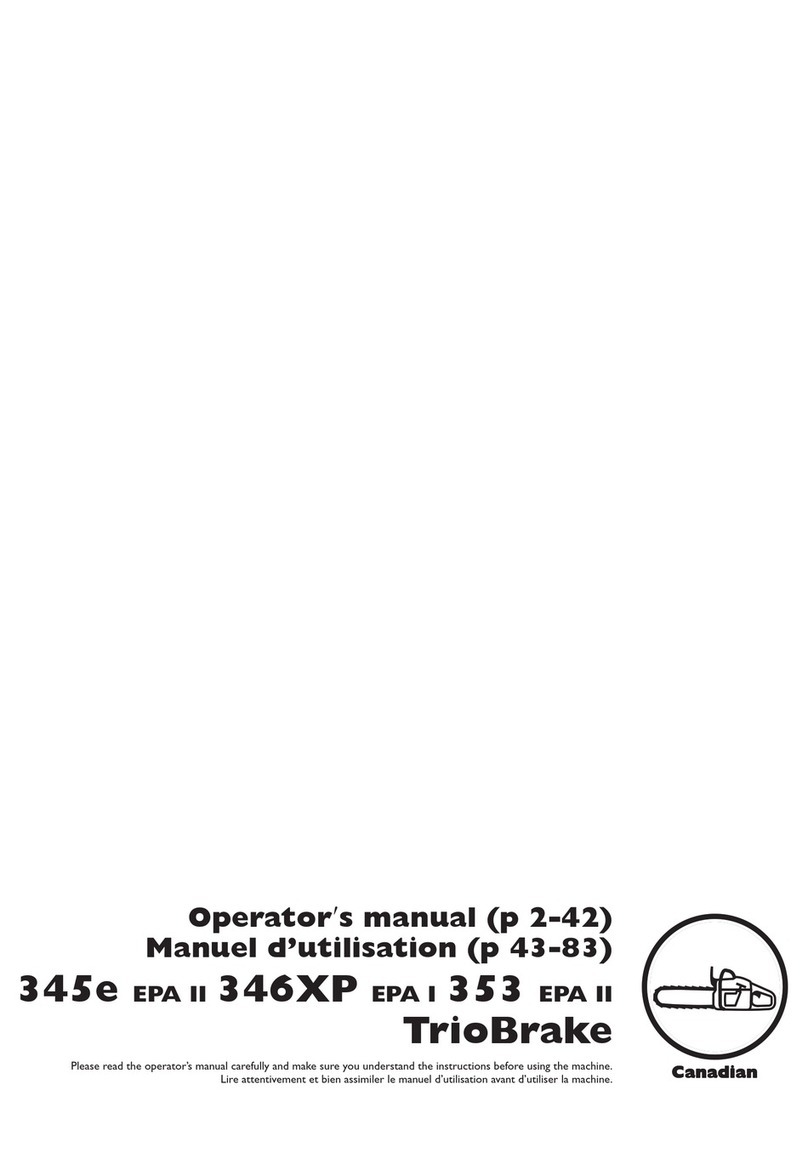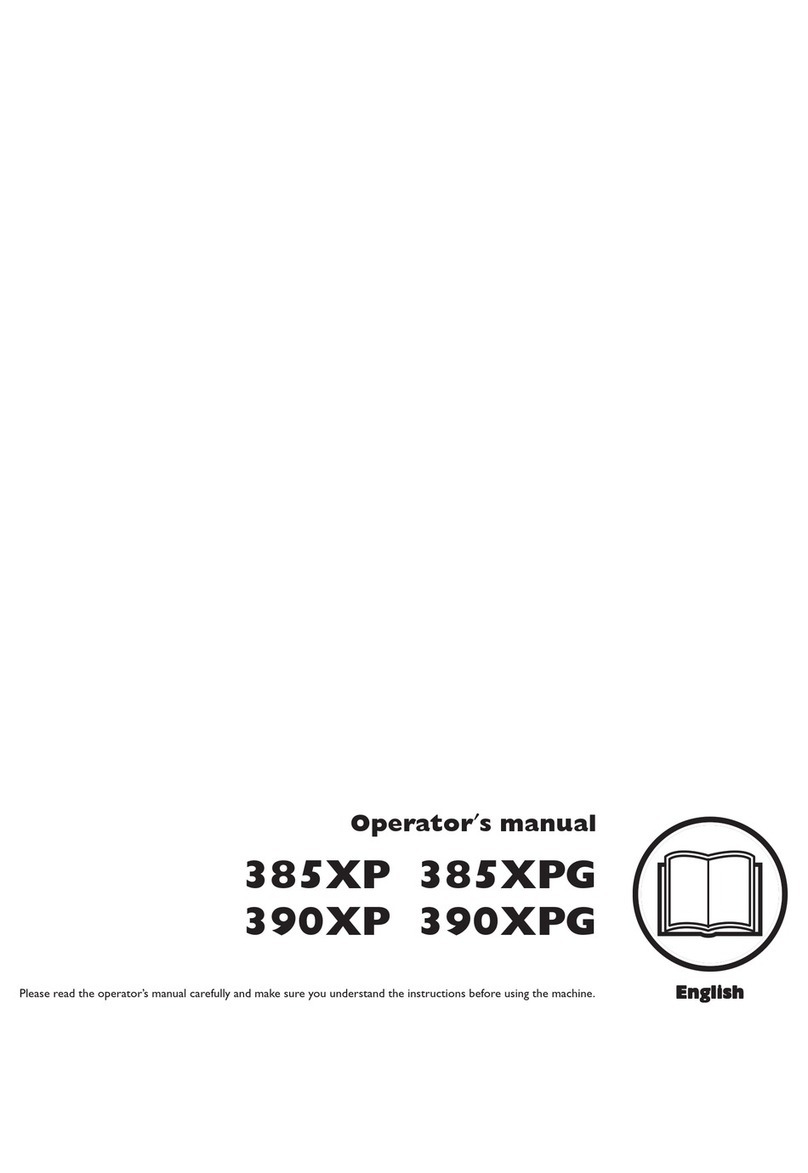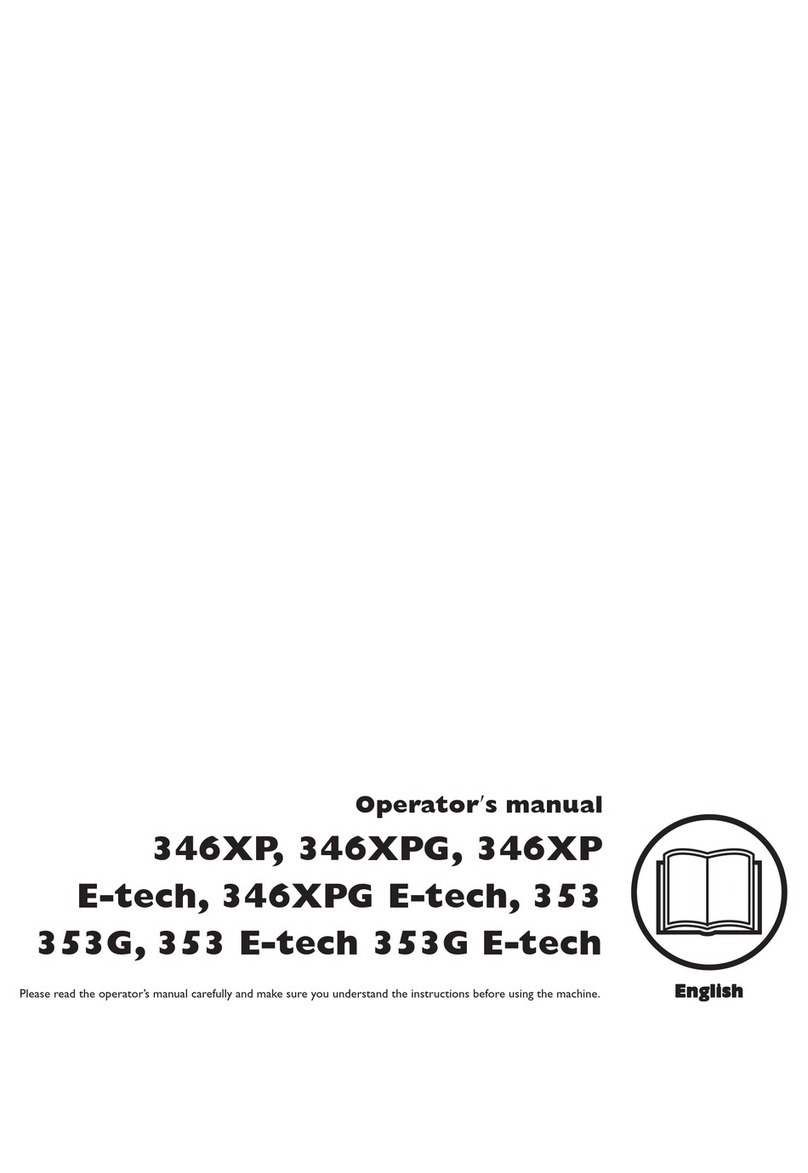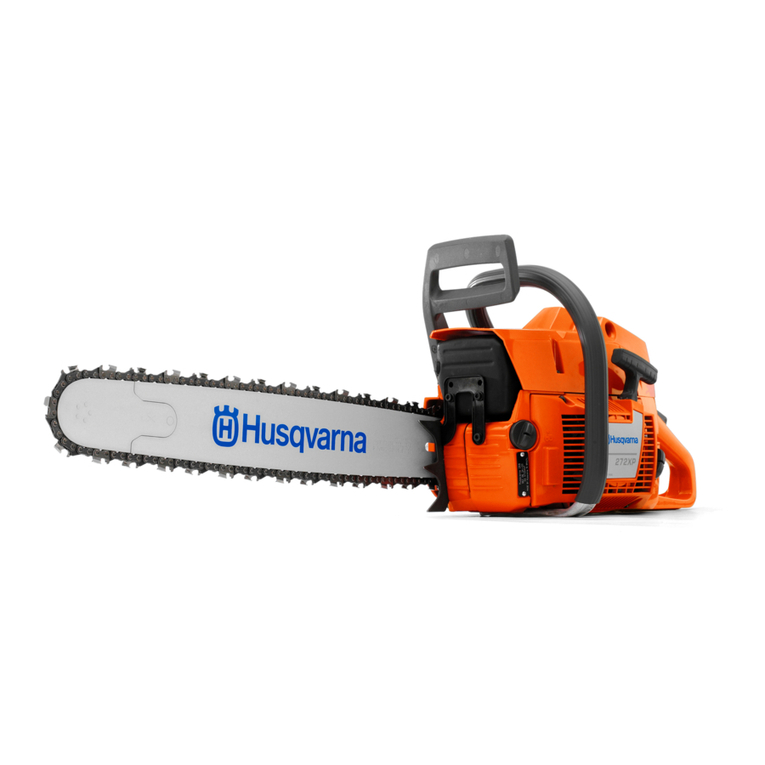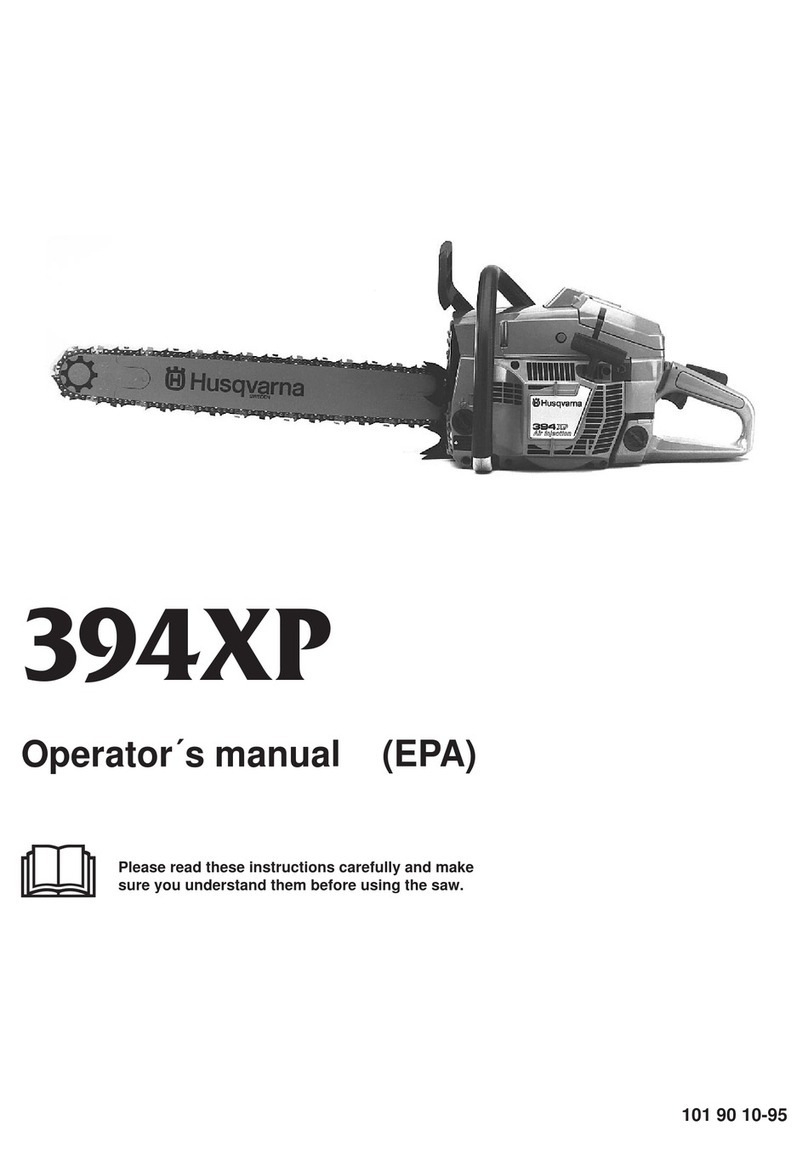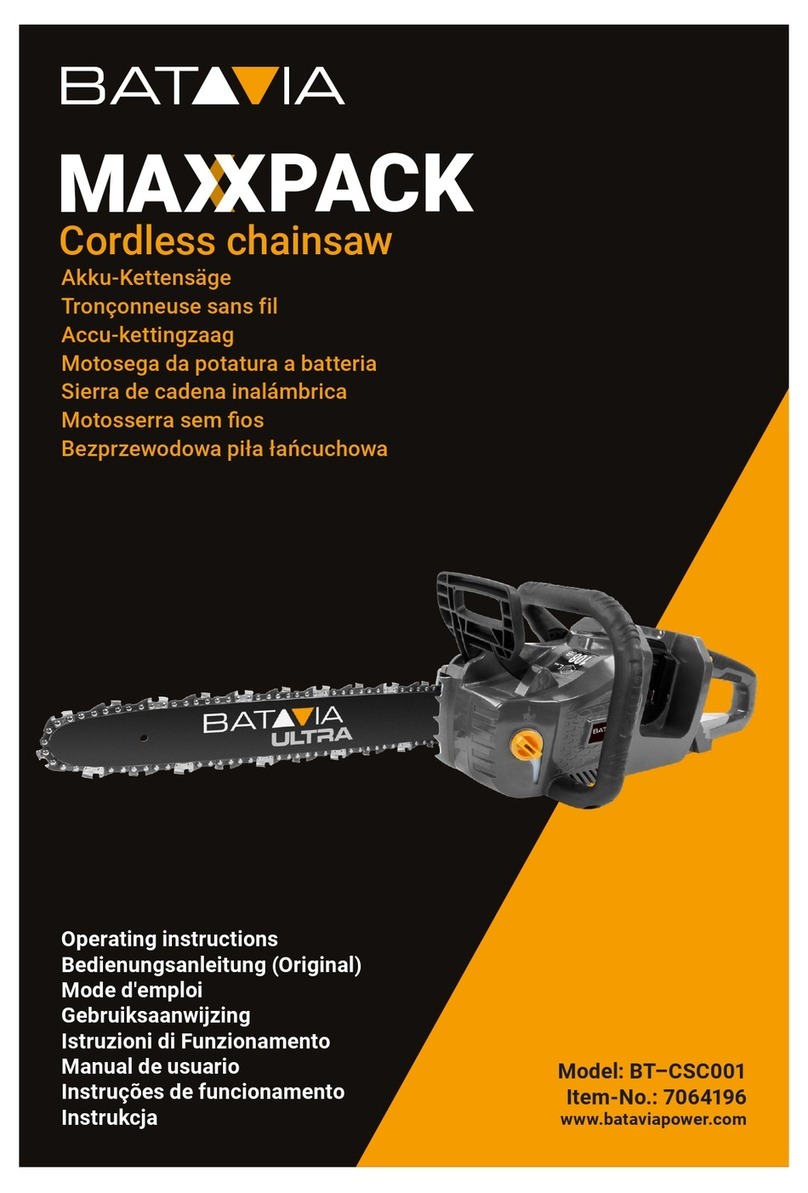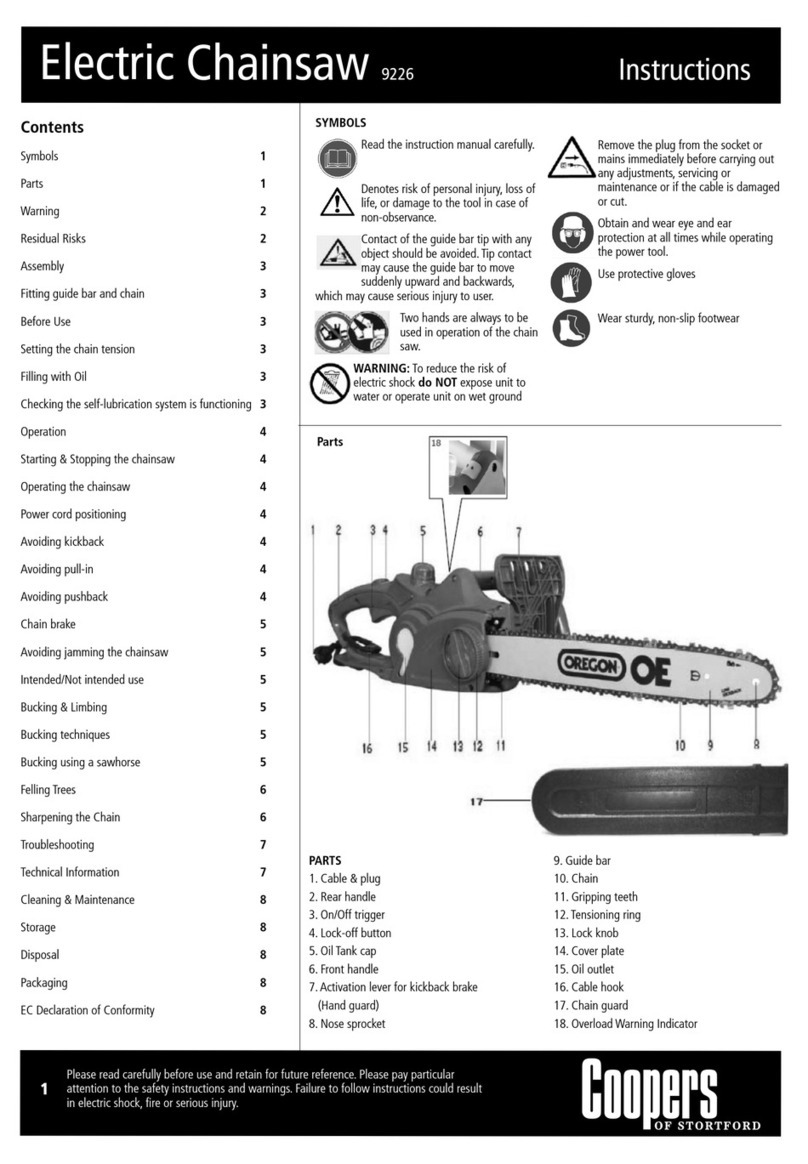WARNINGS AND SAFETY INSTRUCTIONS (continued)
OPERATE YOUR SAW SAFELY
1,
2,
3.
4,
5.
6.
7.
8.
9.
Do not operate achain saw that is damaged,
improperly adjusted, or not completely and
securely assembled.
Operate the chain saw only in outdoor areas.
Do not operate sawfrom aladder or in atree.
Position all parts of your body to the left of
cut and awayfrom the sawchain when the en-
gine is running.
Cut wood only. Do not useyour sawto pry or
shoveawaylimbs,roots,orotherobjects.
Make sure the chain will not make contact
with any object while starting the engine.
Nevertrytostartthe sawwhen the guidebar isin a
cut or kerf.
Use extreme caution when cutting small size
brush and saplings. Slendermaterialcancatch
thesawchainandbe whippedtowardyou orpull
youoffbalance.
Be alert for springback whencuttingalimbthat
is undertensionsoyouwill not be struckby the
limborsawwhentensioninwoodfibersisreleased.
Do not put pressure on the saw at the end of a
cut. Ap-plyi~gpressure can cause you to lose con-
trol when the cut is completed.
10.Stop the engine before setting the saw down.
MAINTAIN YOUR SAW IN GOOD
WORKING ORDER
1.
2.
3,
4.
5.
6.
7.
8.
Have all chain saw serviceperformed by aqu-
alified service dealer withthe exceptionof the
itemslistedinthemaintenancesectionofthisman-
ual. Forexample,if impropertoolsareusedto re-
move or hold the flywheelwhen servicingthe
clutch,structuraldamagetotheflywheelcanoccur
andcausetheflywheeltoburst.
Keep fuel and oil caps, screws, and fasteners
securely tightened.
Keep the handles dry,clean, and free of oil or
fuel mixture.
Make certain the saw chain stops moving
when the throttle trigger is released. Forcor-
rection,referto “CarburetorAdjustments.”
Stop saw if chain strikes aforeign object. In-
spectunitandrepairorreplacepartsasnecessary.
Disconnect the spark plug before performing
anymaintenance exceptcarburetoradjustments.
Never modify your sawin anyway. Useonlyat-
tachmentssuppliedorspecificallyrecommendedby
themanufacturer.
Alwa sreplace the chain brake immediately
i
if it ecomes damaged, broken, or is other
wise removed.
CARRY AND STORE YOUR SAW SAFELY
1.
2.
3.
Hand carry with engine stop ed, the muffler
$’
awayfrom your body,andgui ebarandchainto
therear,coveredpreferablywithascabbard.
Before transporting in any vehicle or storing
in any enclosure, allowyour saw to coolcom-
pletely,coverthebarandchain,andproperlysecure
toavoidturnover,fuelspillage,ordamage.
Empty the fuel tank before storing the tool.
Use up fuel left in the carburetor and fuel lines by
starting the engine and letting it run until it stops.
4. Store unit and fuel in adry area out of the
reach of children. Donotstorewherefuelvapors
canreachsparksoranopenflamefromhotwater
heaters,electricmotorsorswitches,furnaces,etc.
THIS CHAINSAWIS FOR OCCASIONALUSEONLY.
ISQTl!b Exposureto vibrations through prolonged use
of gasoline powered hand tools could cause blood
vessel or nerve damage in the fingers, hands, and
wrists of people prone to circulation disorders or
abnormal swellings. Prolonged use in cold weather
hasbeen linkedto blood vessel damagein otherwise
healthy people. If symptoms occur such as numb-
ness, pain, loss of strength, change in skin color or
texture, or loss of feeling mthe fingers, hands, or
wrists, discontinue the use of this tool and seek
medical attention. An anti–vibration system does
not guaranteethe avoidanceof theseproblems. Us-
erswho operatepower tools on acontinual andreg-
ular basis must monitor closely their physical con-
dition and the condition of this tool,
~Refer to the Code of Federal Regulations,
Section 1910.266(5); 2.5.1 of American National
Standard Safety Requirements for Pulpwood Log-
ging, ANSI 03.1–1978~ and relevant state safety
codes when using achain sawfor logging purposes.
KICKBACK SAFETY FEATURES
AWARNING
The following features are included on your saw
to help reduce the hazard of kickback; however,
such features will not totally eliminate this dan-
gerous reaction. As achain saw user, do not rely
only on safety devices. Youmust follow all safety
precautions, instructions, and maintenance in
this manual to help avoid kickback and other
forces which can result in serious i~”ury.
.Reduced-Kickback Guide Bar, desimiedwitha
small radius tip which reduces the”size~f the kick-
back dangerzone onthe bar tip. Figure 5. ARedu-
ced– Kickback Guide Bar is one which has been
demonstrated to significantly reduce the number
and seriousness of kickbacks when tested in accor-
dance with the safety re uirements for gasoline
!
powered chain sawsas set yANSI B175.1 – 1991
(American National Standards Institute, Inc.,
StandardB175.1 -1991).
.LOW-Ki&baCk Chain, designed with acon-
toured depth gauge and guard link which deflect
kickback force and allow wood to gradually ride
into the cutter. Figure 5. Low-Kickback Chainis
chain which has met kickback performance re-
quirements of ANSI B175.1 (Safety Requirements
for Gasoline-Powered ChainSaws)when testedon
arepresentativesampleof chain sawsbelow 3.8 cu-
bic inch displacement specifiedin ANSI B175.1.
●Chain Brake, designedto stopthe chainif our
~handslipsoffthefronthandlebar.Whenkick ack
occurs,if the chainsawis heldcorrectlyandthe
brakeisadjusted roperly,the actuatingleverwill
d!bepushedforwar andthechainbrakewillstopthe
chain.However, do not rely on the presence of the
chainbrake to protect you againstinjuTfrom kick-
back. Although itmayappear thatthe cainis stop-
ping quickly,it still may not be fast enough to pro-
vide protection in the event of kickback. 5

